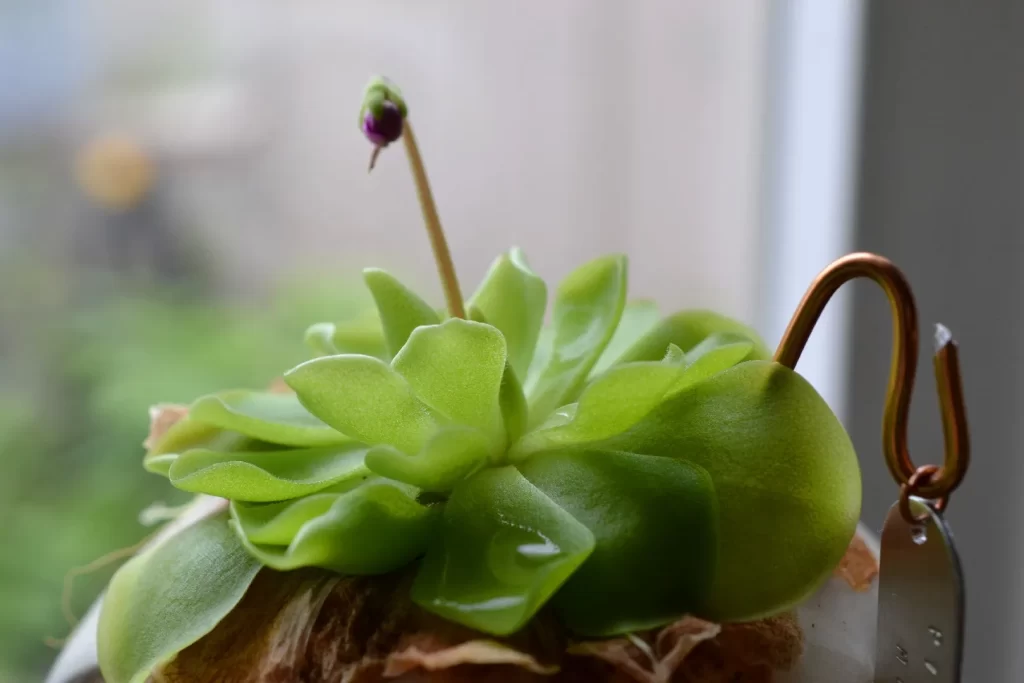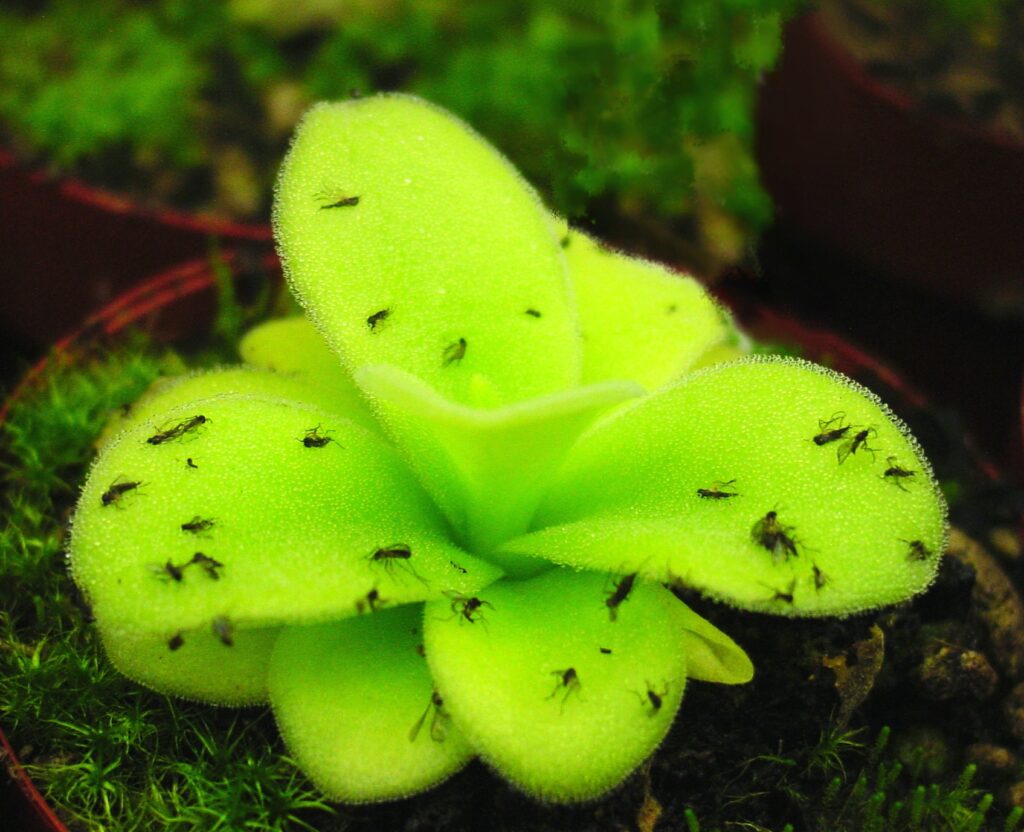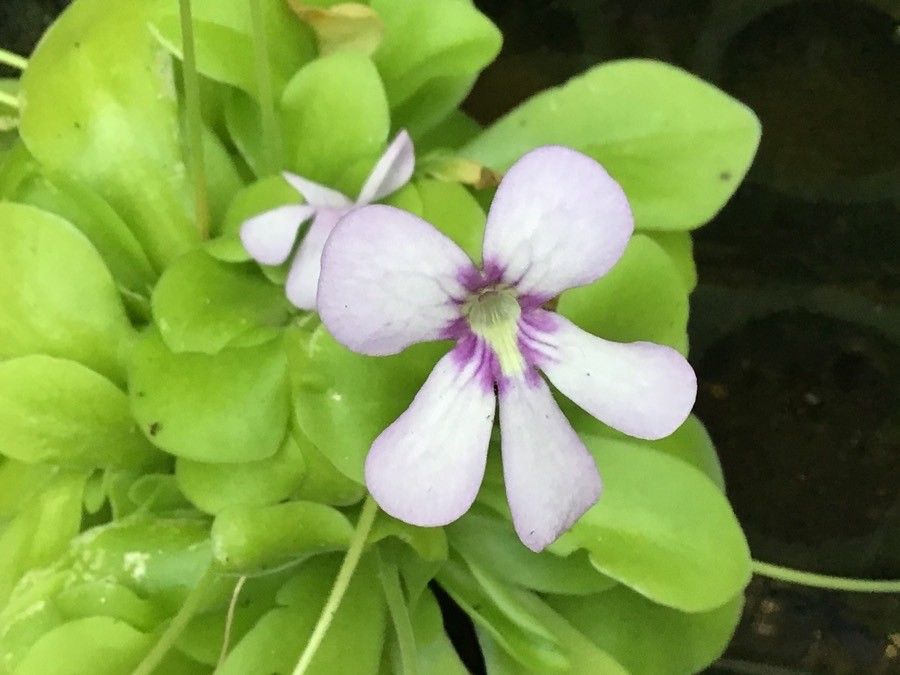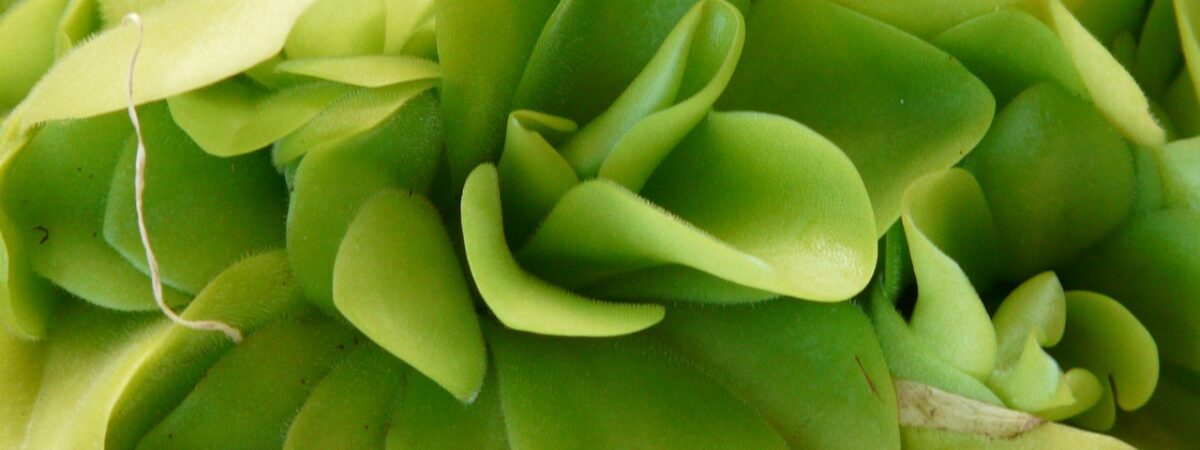
Do you want to grow a plant that is a mean, green, fungus-gnat-eating machine and makes the perfect orchid or houseplant companion?
Your answer is pretty simple. A butterwort or a ‘ping’ or Pinguicula.
Butterwort is a must-have plant for those who love flowers, hate bugs, and already have a good grasp on plant care.
The butterwort is an easy-to-grow carnivorous plant provided you give them good light and pure water as a perk. If they’re happy they’ll flower once or twice a year too.
Plant Overview

Butterwort, commonly known as pinguicula, is a carnivorous flowering plant.
This sticky plant has glandular leaves which are used for luring, trapping, and digesting insects. This behavior of this plant is due to the poor nutrition the plants receive from the environment.
There are more than eighty species of this plant present throughout the world among which thirteen are native to Europe, nine to North America, and some to Northern Asia. However, the most significant number of species of butterwort resides in Central and South America.
The butterworts are perennial plants that live for more than two years. They are categorised into two main groups based on their climatic conditions.
Tropical butterworts are carnivorous throughout the year and it is located where winter seasons are less or does not exist. However, delicate butterworts flower during the summer season.
How to grow butterworts?
If you want to grow butterworts in your house, you can follow the following steps.
You can use plastic cherry tomato containers which have some side and bottom slots, but are very clear and allow for both light and air to move through the box to grow your plant.
The box should be semi-closed to provide the right kind of humidity to build in the box, but it will keep the plants dry. It is suggested to place a 1-2″ layer of sphagnum moss on the bottom layer of the box.
Then you can add an additional 1/4″ of chopped sphagnum and place it on the top of the box.
This fine layer of sphagnum on the top of the box will help to keep the tiny seeds of the plants closer to the surface and prevent you from losing a bunch of the seeds down between the large chunks of the moss.
Once the moss is placed in the soil, it is suggested to sprinkle the seeds evenly on the top. Then you can close the lid and put the tomato container under bright light.
How to care for butterworts?

Butterwort is a very self-sufficient plant. While growing outside, this plant can acquire its food.
The plant will grow best if it receives the proper soil treatment, sunlight, temperature, and humid conditions.
This plant is not bothered by any kind of pests or diseases. In fact, it will bother the pests.
The most crucial requirement of this plant is watering the plant. The plants do not require to dry out and die.
The right kind of water is also important for the plant as it is very sensitive to salt and certain minerals. You can also use rainwater or distilled water to grow this plant.
Humidity
As per most of the experts, butterworts need high humidity conditions to grow and in general providing high humidity is ideal that offering good airflow.
However, High humidity and stagnant conditions often cause leaf and root rot.
If you are worrying about having lower humid conditions for this plant, then it is said that as long as you are providing the plants good light and keeping their roots moist, then low humidity isn’t a problem.
Humidity isn’t a big deal but make sure you don’t let the plants dry out too hard. However, the biggest challenge for you to grow butterworts in general, is that they tend to overgrow small species.
water
Like other carnivorous plants, butterworts do their best when provided with pure water which isn’t going to burn the roots or cause any kind or issues as the water evaporates.
However, if your water is high in minerals, those salts may concentrate over time as you water and that water evaporates. It may lead to serious conditions that butterworts just aren’t able to mitigate.
So it is suggested to water your plants with that water that has less than 20 ppm. Typically, water bottles that say the total ppm is as close to 0 as you can get are ideal for your plant. However, distilled or RO water may also work as it is pure water without minerals.
Light
Butterworts do their best with moderately-bright light. So if you want to grow it as a houseplant, you can place it near an East or west-facing window where they can get direct sun for the early or late hours of the day.
If your plant is exposed to direct sun in midday it may be too hot and could scorch the leaves.
You can also grow your plant very well under LED grow lights where the intensity of the light is more consistent throughout the day.
If you’re using any kind of LED light, it is suggested to opt for about 18-24w of LED light per square foot at about 12″ from the light. If the plants are placed closer to the light, you should opt for lower wattage (12-18w); and if they’re further, you can opt for higher wattage otherwise you’ll lose light intensity to dispersion.
Soil
There is a different kind of soil mix that depends on the species that you grow. However, there is a general soil mix for all the plants If you are growing your plant in a cool Temperate zone you can mix 50% peat, 25% sand, and 25% perlite.
Butterworts can’t grow in acidic soils. So soil with something which is more on the alkaline side is just as good if not better.
If you are growing your plants in a warm temperate zone, you can make a mixture of 50% peat and 50% sand. These plants for the most part will enjoy a soil that is open and acidic.
In Tropical zones, you can make a mixture by adding 25% sand, 25% perlite, 25% vermiculite, and 25% peat. These plants in this zone will tend to grow in more alkaline environments since many grow on cliffs of gypsum and on trees.
Fertilizer
It is suggested not to use any kind of chemical fertilizers which opt for insects. If your plant doesn’t have a fungus gnat problem, then you are very lucky.
You can still get away without having to feed your plant as the bulk of the “food” comes from light. Butterworts generally feed off tiny soil insects like mites, springtails, etc from the soil and the things that are naturally already in your pots. That’s why they make good companions for those people who already have a lot of plants.
Conclusion
Butterworts are very popular as one of the lesser common carnivorous plants.
When the prey is trapped in these plants, the leaves turn inwards to aid the trapping further. This method of trapping the prey mainly acquires nitrogen, which is very uncommon in the environment where the plant thrives.
The leaves of the plants are distinct, which helps to distinguish the plant.
So grow a butterwort in your yards and keep it safe from unnecessary bugs.
How to grow and care for baby’s tear plant – An effective guide






